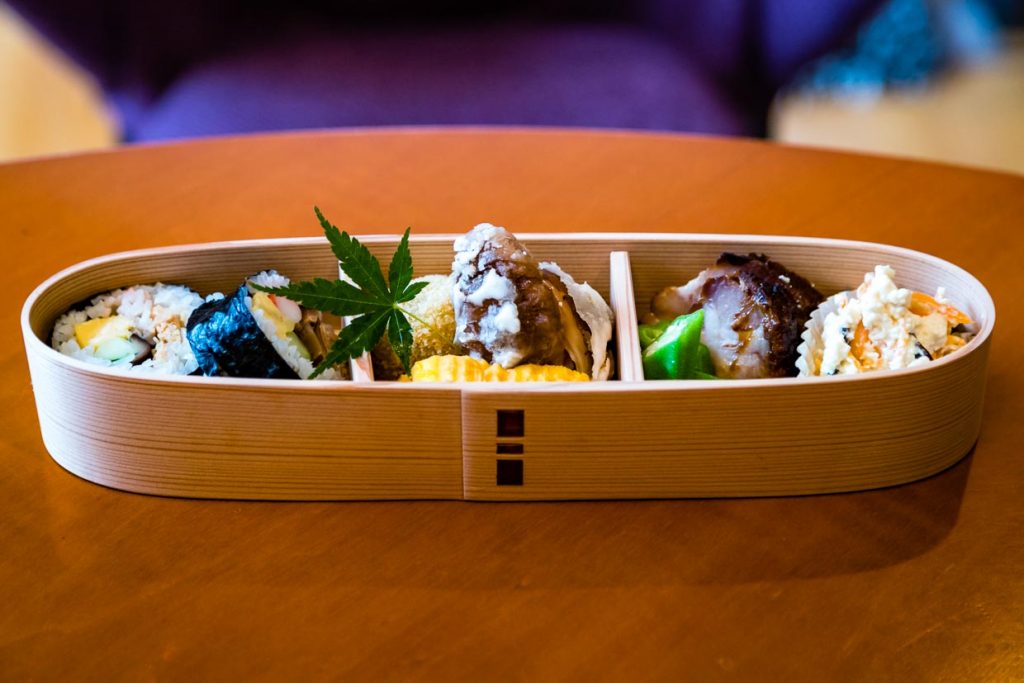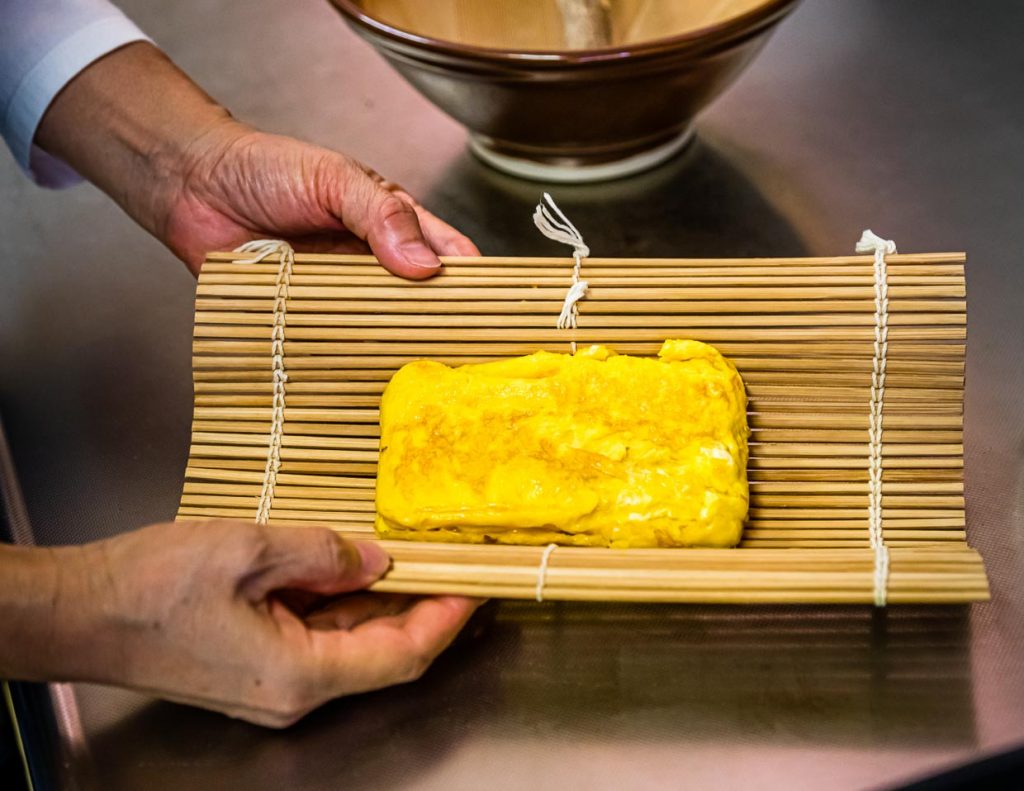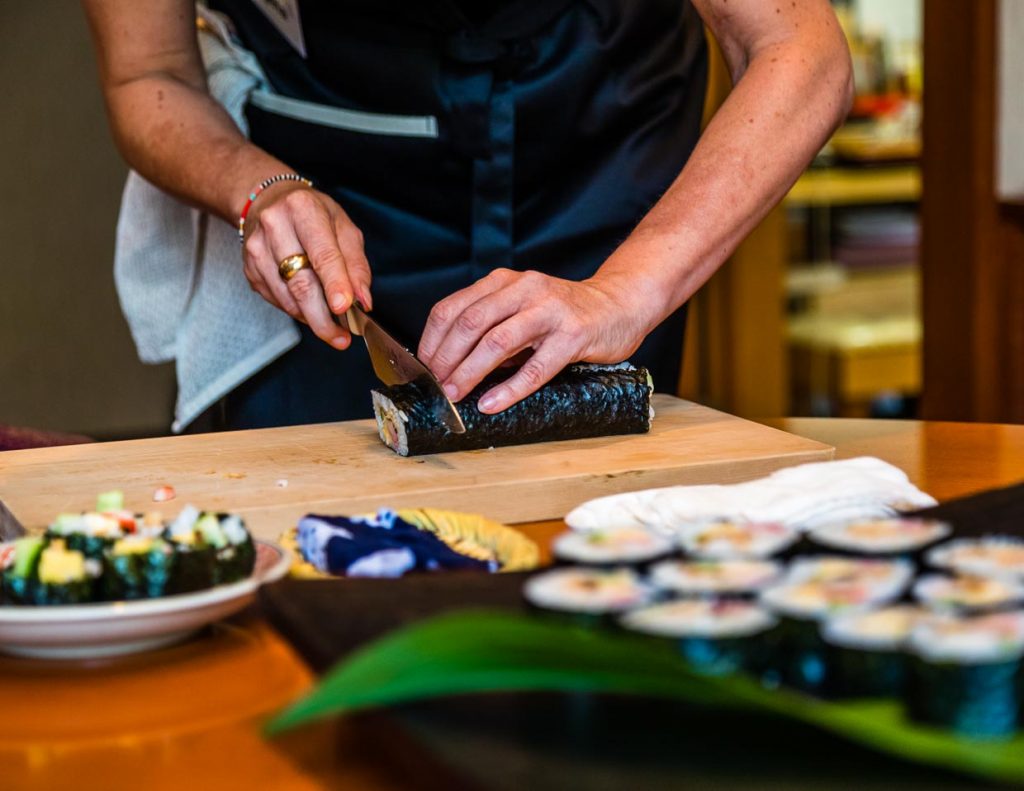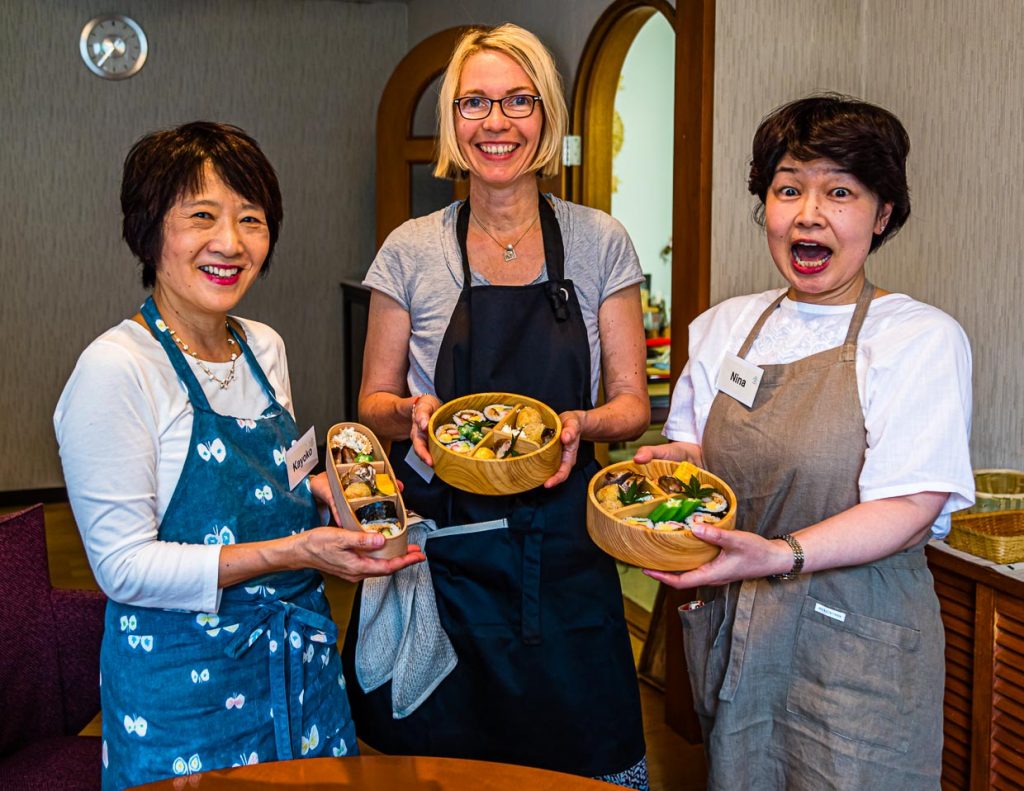Bento box has accompanied the Japanese for centuries. At first, it was the nobility who afforded themselves noble lacquer boxes filled with small dishes for their trips to the countryside. Later, in the Edo period from the 17th century onwards, the real flowering of the bento began. With makunochi bento, Japanese people combine their passion for good food with their enthusiasm for theater and stage plays. Makunochi refers to the intermission in a theater performance. Whereas in our country, at most people sip a glass of champagne in the foyer during intermission, the Japanese courageously reach into the large bags they have brought with them. As soon as the curtain falls, a lively rustling and smacking begins.

Makunochi bento is not bought in the theater bistro, but brought from home. Instead of small handbags, Japanese women have voluminous shopping bags stowed under their theater seats. It is important to know that a Kabuki performance takes place during the day and lasts for many hours. It is quite common to watch only a part of the action. However, in the foyer areas of the Kabuki Theater in Tokyo, there are small snack stands and even a restaurant for those who didn’t bring their own bento.

With the beginning of the railroad era, the eki ben was born, the station bento. Today, the bento boxes can also be found in every konbini. The small supermarkets are usually open around the clock. Larger supermarkets have a huge selection of bentos. The content of the box is always very balanced, contains protein, cooked or pickled vegetables and rice. The bento box is thus ubiquitous and a meal for students, workers, hikers, travelers or even theater-goers.

A workshop with bento chef Kayoko Kawamura
At a workshop with bento chef Kayoko Kawamura, we prepared a classic picnic bento. Kayoko calls her boxes memory bentos. She herself is originally from Tokyo, and at first she doesn’t like the tranquil country life on the Izu Peninsula. So her husband always takes her out into nature, showing her the most beautiful places by the sea and in the mountains inland on the Izu Peninsula. Every time she goes out for a picnic in the countryside, she brings along a well-stocked bento box. Over the years, Kayoko has elevated bento to a true art form. Her boxes, and this is generally important, look beautiful. When you open them, the contents seem like a landscape. No space is wasted in the compartments of the box. Never do the contents seem stuffed in. Everything looks balanced and appetizing.

Travelers to Japan could book a bento workshop with Kayoko, including a picnic in the countryside, through the provider Holiday Cooking Izu. The cooking is done at her home. This is exciting because you get to know a Japanese household in this way. Normally, one travels to hotels or, at best, ryokans. Here you stand together with Kayoko in her kitchen. She shows us how to prepare a dashimaki tamago, a rolled, sweet-tasting omelet. Of course, maki rolls are also prepared. In general, small dishes with the sticky rice are very suitable for transport in the bento box. One of the first bentos were onigiris. Rice balls filled with umeboshi, a pickled plum, or tuna paste. Even the samurai had onigiri with them as food on their war campaigns.

When filling the box, no space is wasted and yet the contents are arranged so that all things come together harmoniously. At the cooking class in Kayoko’s private kitchen, you get a particularly authentic impression of the importance of bentos in everyday Japanese life. Kayoko demonstrates several cooking processes, including sushi or tofu salad. She explains basics worth knowing about cooking rice or preparing a dashi broth. At the end of the workshop, filling the bento box is a great pleasure, surpassed only by eating it afterwards.

The stay in the prefecture was partly supported by the Shizuoka Tourism Association

